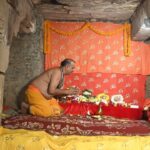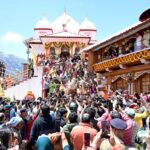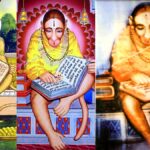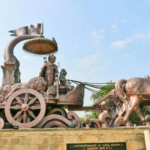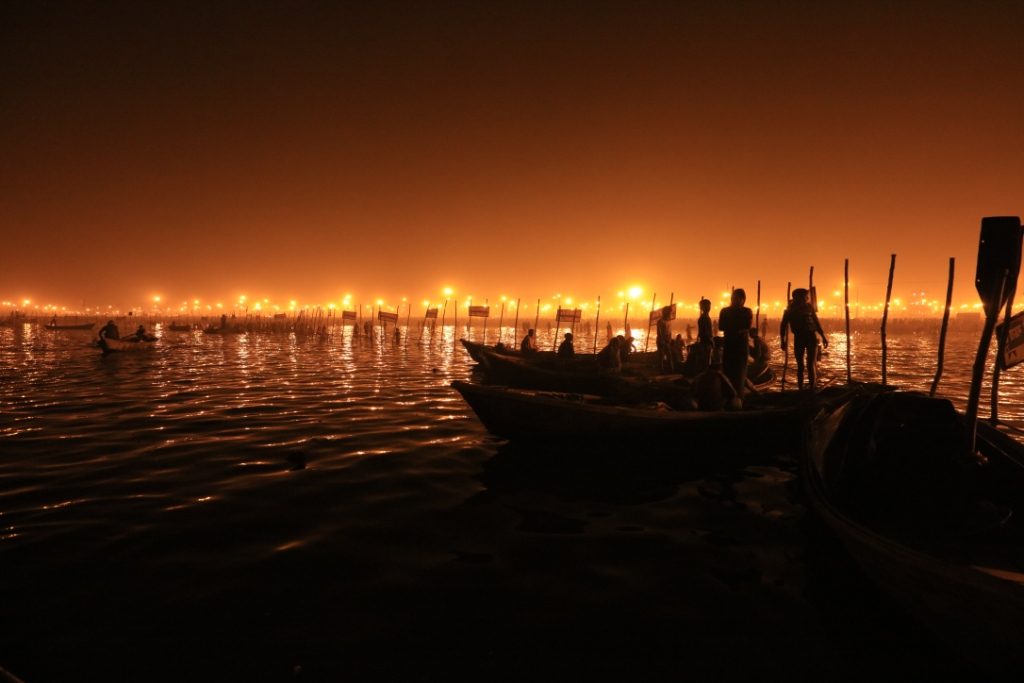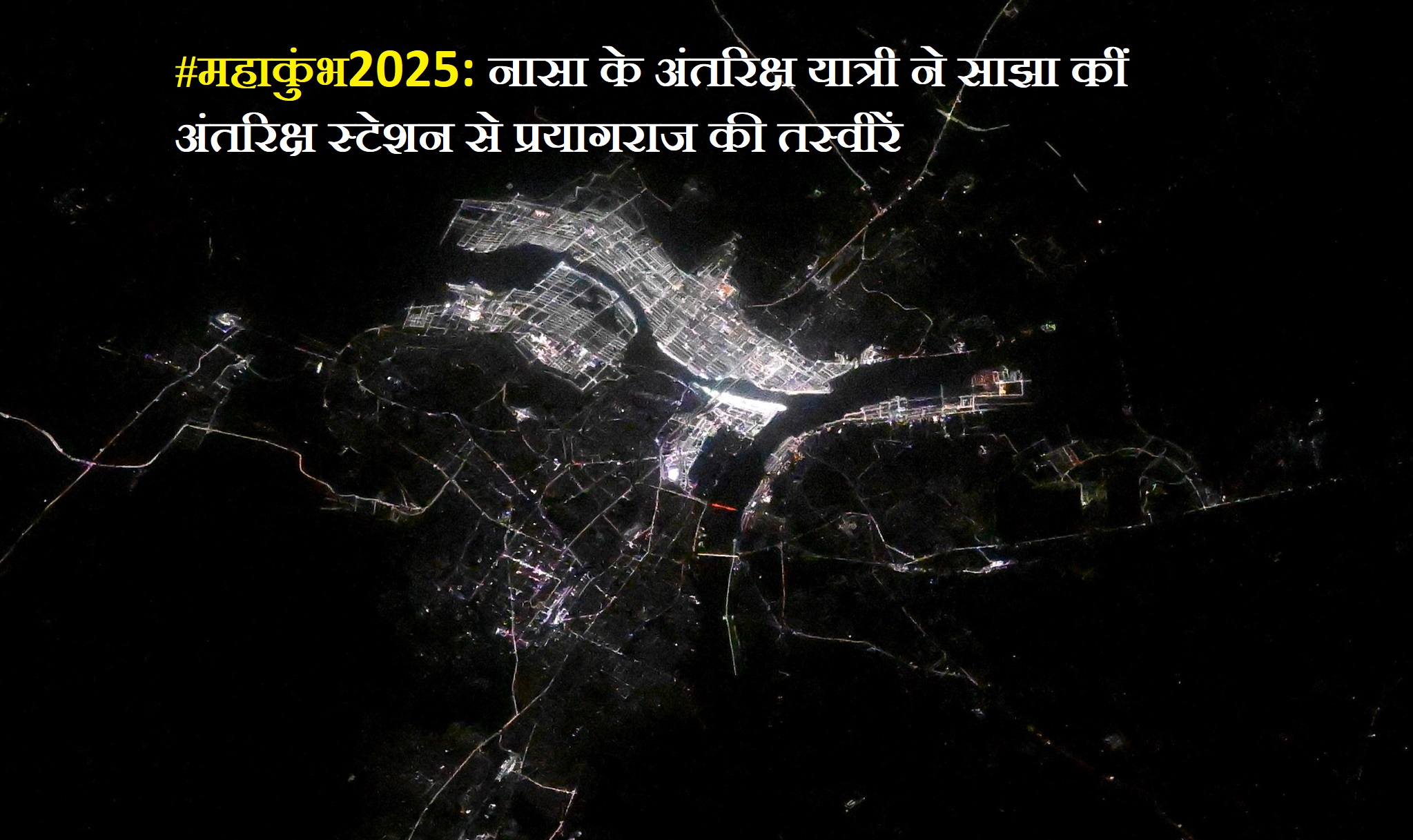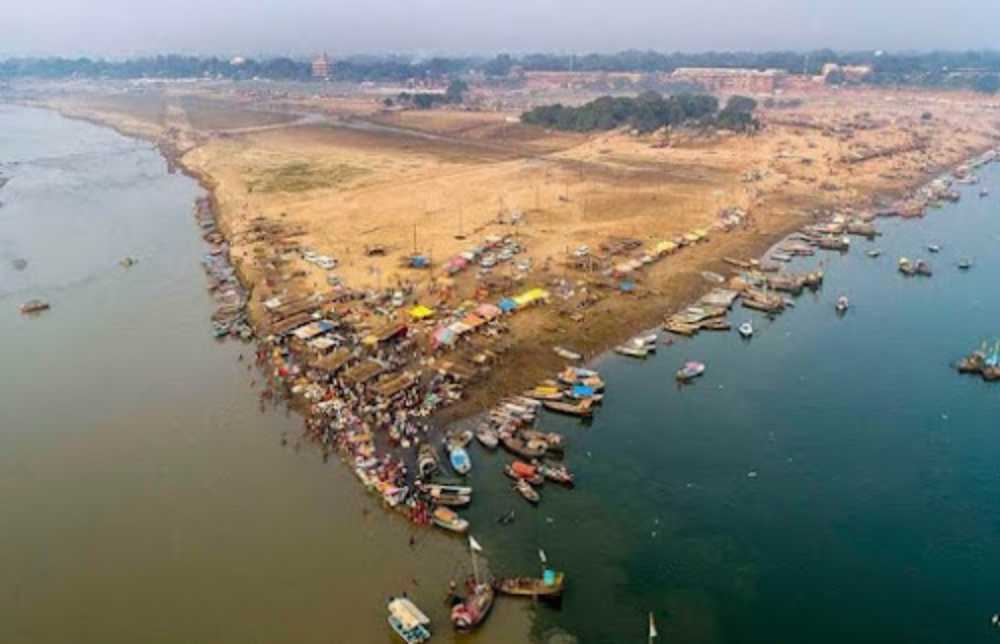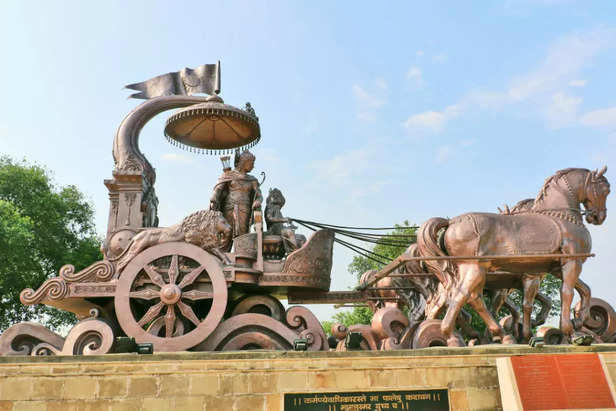Prayagraj is one of the oldest cities in India. It is crowned in ancient scriptures as ‘Prayag’ or ‘Teertharaj’ and is considered the holiest of pilgrimage centres of India. It is situated at the confluence of three rivers- Ganga, Yamuna and the invisible Saraswati. The meeting point is known as Triveni and is very sacred to Hindus. The Kumbh held in every six years and Mahakumbh in every 12 years at Prayagraj (Sangam) are the largest gatherings of pilgrims on this earth.
Historically, the city has been a witness to many important events in India’s freedom struggle such as emergence of the first Indian National Congress in 1885, the beginning of Mahatma Gandhi’s non-violence movement in 1920.
Tourist Places of Prayagraj
Kumbh Mela and Sangam
Prayag in modern-day Allahabad is believed to be the most important pilgrimage centre for Hindus. Traditionally river confluences are regarded as auspicious places, but in Sangam, the significance of the confluence is most pious because here, the holy Ganga, Yamuna and the mythical Saraswati meet to become one.
According to legends, Vishnu was carrying a Kumbh (pot) of amrit (nectar), when a scuffle broke out and four drops were spilled. They fell to earth at the four Tirthas of Prayag, Haridwar, Nasik and Ujjain. A tirtha is a place where the devout can attain salvation. The event is commemorated every three years by the Kumbh Mela, held at each tirtha in turn; the Sangam is known as Tirtharaj, the ‘King of Tirthas’ and here the Kumbh is held once in every twelve years, which is the greatest and holiest of all.
The Maha Kumbh Mela is the largest religious congregation in India, attended by millions. The over month-long fair is marked by the construction of a massive tented township, complete with cottages, huts, platforms, civic facilities, administrative and security measures. It is organized immaculately by the government, the local authorities and the police. The mela is especially renowned for the presence of an extraordinary array of religious ascetics – sadhus and mahants – enticed from remote hideaways in forests, mountains and caves. Once astrologers have determined the propitious bathing time or Kumbhayog, the first to hit the water is by legions of Naga Sadhus or Naga Babas, who cover their naked bodies with ash and wear hair in long dreadlocks. The sadhus, who see themselves as guardians of the faith, approach the confluence at the scheduled time with all the pomp and bravado of a charging army. The most recent Maha Kumbh Mela was held in 2013 and the next is due in 2025.
Sangam
This is the point where the brown water of the Ganga meets the green water of the Yamuna, along with the mythical Saraswati, which remains unseen but believed to run underground. It is located about 7 km from Civil Lines, overlooked by the eastern ramparts of the Akbar Fort.
Wide flood plains and muddy banks protrude towards the sacred Sangam. At the mid-river point priests perch on small platforms to perform puja and assist the devout in their ritual ablutions in the shallow waters. A dip in the Sangam water is supposed to be the holiest of the holy pilgrimages for the devout Hindu. Boats to the Sangam can be rented by pilgrims and tourists alike at the ghat near the fort. It is during the Maha Kumbh/Kumbh that the Sangam truly comes alive, attracting the devout from all across the country.
Shri Lete hue Hanuman ji Temple
In Daraganj locality, on the bank of the Ganga, is the Sankatmochan Hanuman Temple. It is said that Saint Samarth Guru Ramdasji had established the idol of Lord Hanuman Here. The idols of Shiva-Parvati, Ganesh, Bhairav, Durga, Kali and Navgrah are also enshrined in the premises of the temple. Nearby are Shri Ram-Janki temples and HaritMadhava temple.
Nagvasuki Temple
In Anticipation of the Maha Kumbh Mela 2025, the Nagvasuki Temple undergoes a majestic refurbishment, blending traditional architecture with modern aesthetics.
Akshayvat & Patalpuri Temple
Akshayvat “the indestructible Banyan tree” is a sacred fig tree mentioned in Hindu mythology, and in Hindu texts. The Akshaya Vat tree has been mentioned in great details by historians and travelers such as the Buddhist Pilgrim Hieun-tsang and the archaeologist, Alexander Cunningham. The tree is significant, for it is where Rama, Lakshman and Sitathe protagonists of the Ramayana are said to have rested during their exile from Ayodhya. Patalpuri Temple : Patalpuri Temple is one of the oldest temples in India dating back to the vedic period. This beautifully decorated underground temple is built within the Allahabad fort close to the immortal tree Akshayvat.
Saraswati Koop
The Saraswati Koop refurbishment for the done Maha Kumbh Mela 2025 is a monumental initiative aimed at restoring and enhancing the spiritual significance of the sacred well. The project involves meticulous restoration efforts to preserve its historical and cultural importance, ensuring pilgrims experience a profound connection during the revered event.
Maharshi Bharadwaj Ashram
Associated with Sage Bharadwaj, It is a renowned religious place. During the time of Sage Bharadwaj it was famous as an educational centre. It is believed that Lord Rama visited this place with Sitaji and Lakshmanji while proceeding to Chitrakoot during his exile. At present, there are temple of Bharadwajeshwar Mahadeva, Sage Bharadwaj, TeertharajPrayag and Goddess Kali etc. Nearby is the beautiful Bharadwaj Park.
Shri Veni Madhav Temple
As per Padma Purana, Lord Brahma prayed to Lord Vishnu while performing yajna on the pious land of Prayagraj for the protection of Prayagraj and established his twelve forms in Prayagraj. Among the twelve Madhava temples of Prayag raj, the most well-known is Shri Veni Madhav temple. Located on the Nirala Road of Dara Ganj, the idol here is made of Shaligram Shila. Shri Veni Madhav is also considered as the most revered God of Prayag raj. A huge number of devotees line up to for Darshan of their revered God throughout the year. It is believed that without the darshan of Shri Veni Madhav, the pilgrimage of Prayag and Panchkosi Parikrama is not considered complete. Chaitanya Maha Prabhu also used to perform Bhajan kirtan here during his Prayag visits.
Chandra Shekhar Azad Park (Alfred Park)
In 1870, Prince Alfred of Saxe-Coburg and Gotha visited Prayagraj (earlier known as Allahabad). A park, 133 acres in area and situated in the heart of the city’s English quarters, Civil Lines, was built to commemorate the event. In 1931, Chandra Shekhar Azad, a revolutionary freedom fighter was engaged in a fierce gun fight with the British in this park. Aged 24, Azad died here on 27 February 1931.



